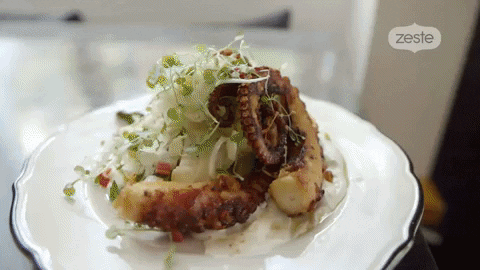Why Restaurants Should Test Email Content Right Now (And How)
To put it mildly, the COVID-19 epidemic has been a rollercoaster ride that has impacted many businesses.
Those in the food and beverage businesses, particularly restaurants, have been affected particularly hard.
Most eateries saw a significant decrease in customers earlier this year. This was owing to severe limits imposed to prevent the virus from spreading.
Many restaurants throughout the world were forced to lock their doors to in-house customers, forcing them to depend entirely on drive-through orders and deliveries.
Millions of small companies have to figure out how to notify consumers of changes. This meant that subscribers were inundated with emails; some efforts were successful, while others were not.
A/B testing is a vital stage in creating an efficient email marketing in any sector. Not every firm can afford to conduct a campaign that fails to connect with clients. A/B testing is thus essential in high-risk businesses such as restaurants.
Email marketing in the COVID-19 period
Email marketing has become an integral component of almost all marketing strategy. It is the digital channel with the best return on investment (ROI).
Consumers got a lot of email as COVID-19 swept over the globe. Marketers’ standards increased significantly as a result of this.
While many companies benefited from sending email updates, they recognized that customers were becoming dissatisfied with too many emails that said the same thing.
Unfortunately, there was no way for many companies to avoid sending an update email. Restaurants needed to develop a means to keep their customers informed of the constant changes.
Now that things have calmed down, many sectors may reconsider their email marketing approach. They may begin making much-needed modifications to what they communicate and when they send it. This will not only save unwanted communications, but will also keep your communities informed as you navigate your company’s new normal.
COVID-19 updates are still vital, but only pertinent material is shared
Email marketers are aware that they must notify their subscribers of significant developments. Earlier this year, though, most COVID-19-related emails contained essentially similar language, which isn’t a good experience for your subscribers.
McDonald’s provided a rehashed, bulleted piece on how they were keeping employees and customers safe.
The highlighted part is one of several variations seen in millions of emails from many sectors.
The COVID-19-update email cannot be deleted. Emails must be sent when things change. Instead of giving the same message as everyone else, you may ensure that your viewers only get the most relevant material.
Consider the following Foodsby example.
While this email is similar to the McDonald’s email, Foodsby went into further depth and provided specific advice to its employees and customers.
Do your automated emails reflect the present situation?
You, like any email marketing expert, probably plan out many email campaigns months in advance. Email automation keeps you ahead of the competition.
Plans must sometimes alter, as we witnessed earlier this year.
Many customers, particularly those who were joined to different restaurant email groups, observed that certain mails did not adhere to lockdown procedures. Many restaurants, for example, continued to urge guests to dine-in even when it wasn’t an option. This was due to the fact that some firms did not proofread their emails before sending them.
Examine your automated emails: do you need to add a new section, change current content, etc.? These improvements will not be difficult, but they will demonstrate to your subscribers that you care.
Consider this KFC example.
If you’re not sure what you should or shouldn’t be testing, pay close attention and A/B test the regions listed below.
1. Preheader text and subject lines
Marketing experts recognize the importance of subject lines and preheader material. These are the first things your reader notices about you. Throughout the epidemic, customers have become used to seeing “COVID-19” in their mailbox on a regular basis. On the other hand, many people have begun to identify it with a regular “copy-and-paste guideline” email.
Instead of putting COVID-19 in your subject line, try something new to catch the reader’s attention, such as “check in” or “our reaction to the current incident.”
2. Sections regarding COVID-19 updates
You are aware that your readers need regular updates. Consider include a “learn more” section, as seen in the Domino’s example, or providing subscribers with a category selection in their email preferences.
3. Frequency of transmission
Customers value timely information from their favorite companies. Your followers will tune you out if you deliver regular updates with just minor changes. Restaurants should A/B test their send frequency to ensure that clients get the most relevant information.
4. The tone of your communications
This is likely one of the most crucial aspects of A/B test. Sometimes you’ll need to communicate a serious message, and other times you’ll be able to employ a more relaxed or sympathetic tone with your readers. We live in an uncertain era, so experimenting with the tone of your message might be the difference between maintaining or losing readers.
Wrap up
A/B testing in restaurants is more important than you would believe. Your subscribers are more reliant on your messages than ever before. If you don’t think about factors like language and tone, you can lose subscribers and consumers.
Any email marketing plan should include A/B testing on a regular basis. However, during COVID-19, restaurants should spend additional effort A/B testing the following:
- Preheader text and subject lines
- Options for distributing COVID-19 updates
- Frequency of transmission (especially pertaining to COVID-19 updates)






Recent Comments